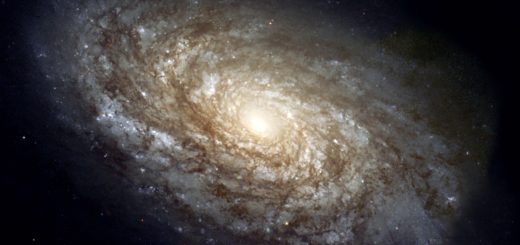Light ‘frozen’ in its tracks
(New Scientist) A pulse of light has been stopped in its tracks with all its photons intact, reveal US physicists. In a vacuum, light travels at the phenomenal speed of 300,000,000 metres per second. Scientists can exploit the way that the electric and magnetic fields in light interact with matter to slow it down.
Over the last few years, scientists have become masters of the light beam. Speeds of a few metres per second are now reached routinely in laboratories around the world. It is rather harder, however, to stop light completely and previous attempts have halted light but lost its photons in the process.
Mikhail Lukin and colleagues at Harvard University in Cambridge, Massachusetts managed to stop light without this loss by firing a short burst of red laser light into a gas of hot rubidium atoms.
This is then “frozen” with the help of two control beams. The light in the control beams interacts with the rubidium atoms to create layers that alternately transmit and reflect the pulse.
As the signal tries to propagate through these layers, the photons bounce backwards and forwards between them. As a result, the pulse makes no forward progress – the light is “frozen” in place. The pulse is set free when the control beams are turned off.
Ulf Leonhardt at the University of St Andrews in Fife, Scotland, says the technique is novel in that the effect the control beams have is “like storing light behind bars”.
Fractions of a millisecond
In 2001, two groups reported they had stopped light (New Scientist 08/08/01). Lukin was involved in one of these experiments, the other was led by Lene Hau, now at Harvard.
Both teams slowed light down by passing it through a gas of atoms. Lukin used hot rubidium atoms, Hau super-cooled sodium. Both managed to reduce the speed of light to zero however, by the time it had slowed to a halt, all of the photons had been absorbed. The pulse could be regenerated because the photons’ energy was stored in the atoms. But while the pulse was stationary, technically, it contained no light at all.
Lukin and colleagues Michal Bajscy and Alexander Zibrov have so far managed to hold light still for just fractions of a millisecond using their new method. But there is no reason why it cannot be trapped for longer, they suggest. This could be a useful trick to employ in telecommunications systems that send optical signals, or more fancifully, in quantum computers.
“Frozen, stationary pulses of light mark a new chapter in quantum optics,” comments Marlan Scully at Princeton University, New Jersey in Nature.







